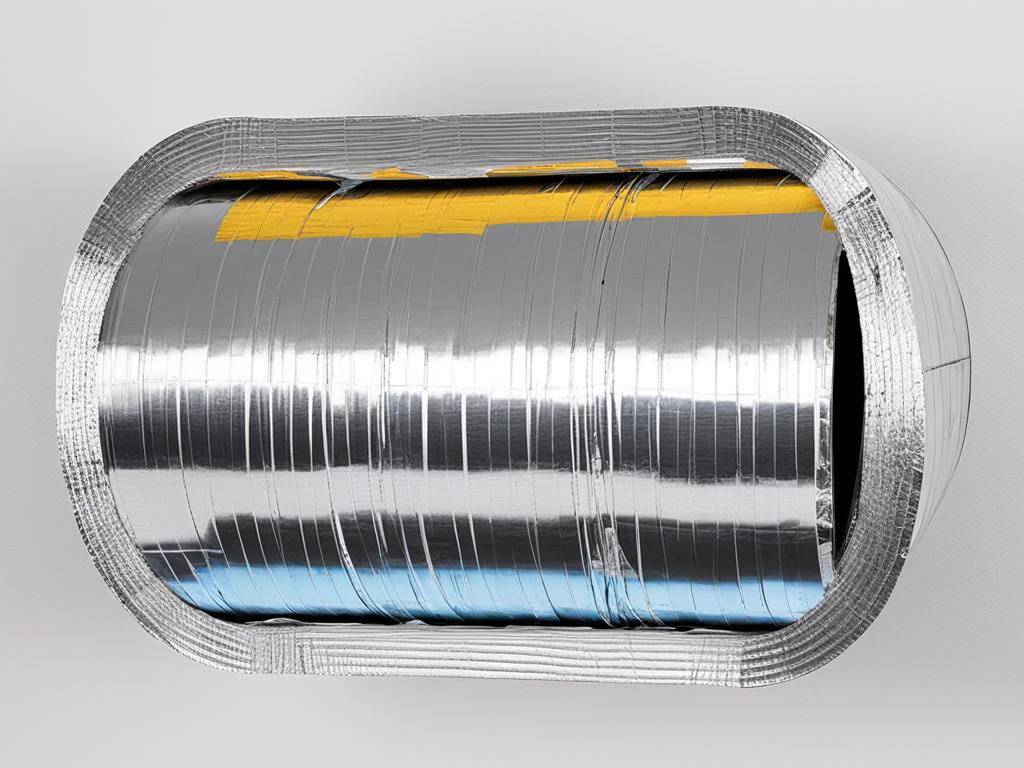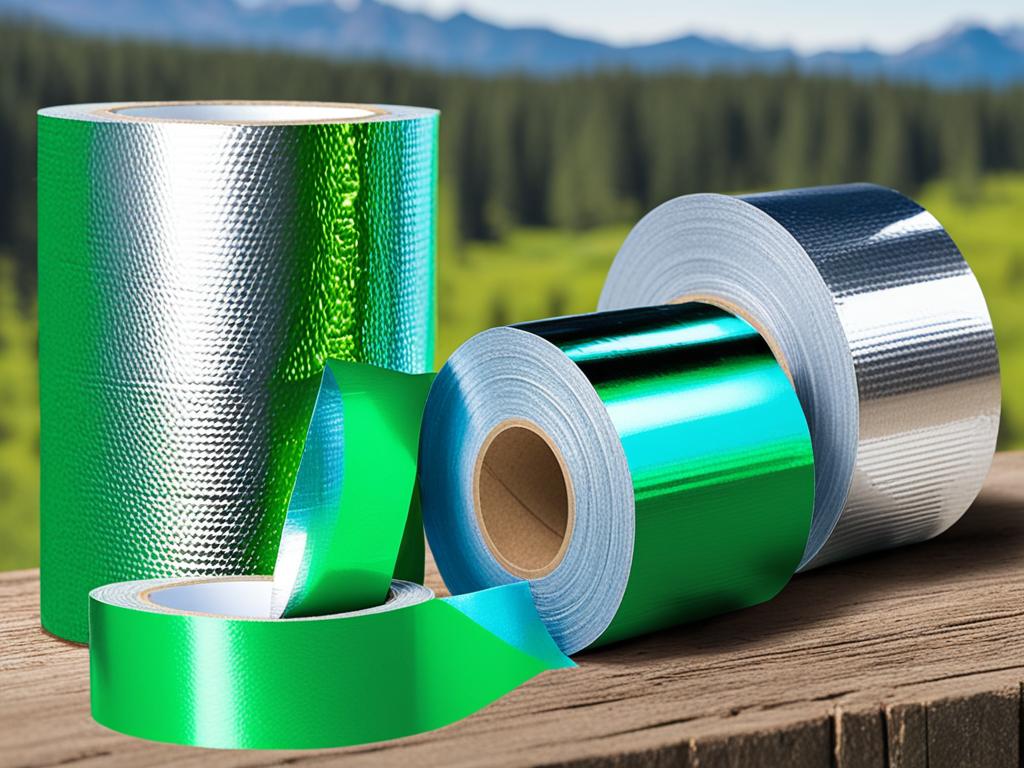When it comes to tackling home improvement projects, choosing the right tape is essential for achieving optimal results. While many people use duct tape for a wide range of applications, there is another contender in the market that offers unique advantages – foil tape.
Foil tape and duct tape may seem similar at first glance, but they have distinct differences that make them more suitable for specific uses. In this article, we will compare foil tape and duct tape, highlighting their strengths, weaknesses, and the best applications for each.
One of the primary factors to consider when selecting tape is the adhesive strength. Foil tape is often preferred for its superior adhesive properties, making it ideal for creating a reliable seal in various scenarios. Duct tape, on the other hand, may not provide the same level of adhesion, particularly in high-humidity or high-temperature environments.
Insulation is another critical aspect to consider, especially for HVAC projects. Foil tape excels in this area, as it is designed to withstand extreme temperatures and provide effective insulation. Duct tape, while versatile, may not offer the same level of durability and thermal resistance as foil tape.
Now, let’s delve deeper into the specific uses and benefits of foil tape and duct tape to determine which is best suited for your repair or sealing needs.
Key Takeaways:
- Foil tape and duct tape offer different advantages and are suited for specific uses
- Foil tape provides superior adhesive strength and is ideal for creating reliable seals
- Duct tape is versatile but may not offer the same level of adhesion in high-humidity or high-temperature environments
- Foil tape is designed for insulation purposes and excels in withstanding extreme temperatures
- Consider the specific task and scenario when choosing between foil tape and duct tape to ensure optimal results
Foil Tape for HVAC Ducts
Foil tape is a superior choice for sealing and joining HVAC components, specifically ducts. Its unique properties make it highly suitable for insulation, durability, resistance to moisture, and heat.
When it comes to HVAC ducts, maintaining a reliable seal is crucial to ensure efficient airflow and prevent energy loss. Foil tape excels in these areas, making it the preferred option for professionals and homeowners alike.
“Foil tape is like a superhero for HVAC ducts. It has the strength and durability to withstand the demanding environment of ductwork while providing superior insulation and protection.”
Unlike duct tape, foil tape is specially designed to withstand high temperatures, making it more effective for insulation purposes. It maintains its integrity even when affixed to heated insulation materials, ensuring a long-lasting seal.
One of the key advantages of foil tape is its resistance to moisture. HVAC systems can generate condensation, and moisture can compromise the adhesive integrity of duct tape over time. Foil tape, on the other hand, remains reliable and unaffected by moisture, providing a secure seal.
In addition to its resistance to moisture, foil tape is also highly resistant to heat. This is an essential characteristic for HVAC ducts, as they are frequently subjected to hot air and temperature fluctuations. The heat resistance of foil tape ensures it remains intact and effective in creating a tight seal.
“When it comes to sealing and insulating HVAC ducts, foil tape is the go-to solution. Its durability, resistance to moisture and heat, and specialized design make it the ideal choice for professionals and homeowners.”

| Foil Tape for HVAC Ducts | Duct Tape for HVAC Ducts |
|---|---|
| Designed for HVAC applications | Not specifically designed for HVAC |
| High-temperature resistance | Lower temperature resistance |
| Moisture-resistant | Prone to adhesive deterioration with moisture |
| Flame-resistant | Not flame-resistant |
| Durable and long-lasting seal | May deteriorate over time |
Conclusion
When comparing foil tape and duct tape, it’s important to consider their specific uses and applications. Foil tape is ideal for sealing and joining HVAC ducts due to its durability, resistance to moisture and heat, and specialized design. The adhesive on foil tape holds up well in high humidity environments, making it a reliable choice for HVAC applications.
On the other hand, duct tape, although versatile, is not suitable for sealing HVAC ducts. Its adhesive may deteriorate over time when exposed to high temperatures, compromising its effectiveness. However, duct tape can still be used for a variety of other DIY projects thanks to its strength and versatility.
It’s crucial to choose the right tape for the job to ensure a proper and long-lasting seal. Whether it’s electrical tape, masking tape, carpet tape, packing tape, or mounting tape, each type has its unique characteristics and applications. By understanding the differences between foil tape and duct tape and considering the task at hand, you can make an informed decision on which tape to use for your specific home improvement project.
FAQ
What is the difference between foil tape and duct tape?
Foil tape and duct tape differ in their composition and intended uses. Foil tape is designed specifically for sealing and joining HVAC ducts, with features like flame resistance, durability, and heat resistance. Duct tape, on the other hand, is a versatile tape used for a variety of DIY projects, but it is not suitable for sealing HVAC ducts.
What are the best uses for foil tape?
Foil tape is best suited for sealing and joining HVAC ducts. Its durability, resistance to moisture and heat, and flame resistance make it ideal for insulation purposes in HVAC systems.
Can duct tape be used for sealing HVAC ducts?
No, duct tape is not recommended for sealing HVAC ducts. While it is a versatile tape for other applications, it is not designed to withstand the high temperatures and conditions in HVAC systems. Foil tape is a better choice for sealing ducts in these scenarios.
What other applications are suitable for duct tape?
Duct tape is versatile and can be used for various DIY projects and repairs. It is commonly used for temporary fixes, binding materials together, securing items, and general-purpose tasks where a strong adhesive is needed.
Is foil tape more durable than duct tape?
Yes, foil tape is generally more durable than duct tape, especially in high-temperature and high-humidity environments. Foil tape’s adhesive is designed to withstand extreme conditions, while the adhesive in duct tape may deteriorate over time.
Which tape is better for insulation purposes?
Foil tape is a better choice for insulation purposes, particularly in HVAC systems. Its ability to maintain integrity when affixed to heated insulation materials makes it more effective than duct tape.
Can sealant or mastic provide a stronger seal than tape?
Yes, sealant or mastic can provide a stronger and longer-lasting seal for plumbing and HVAC projects compared to tape. However, they can be messier to work with and may require additional tools for application.
What should I consider when choosing tape for home improvement projects?
When choosing the right tape, it’s important to consider factors such as the specific task, temperature rating, conductivity, water resistance, and the need for durability and strength. Using the wrong tape for a specific task can lead to problems and safety hazards.
Can I use other types of tape for sealing HVAC ducts?
No, it is best to use high-quality foil tape or duct mastic specifically designed for sealing HVAC ducts. These materials are tested and proven to withstand the conditions and provide reliable and long-lasting seals.
What are the advantages of foil tape in HVAC applications?
Foil tape offers several advantages in HVAC applications. It is flame-resistant, holds up in extreme temperatures, and sticks strongly even in high humidity. These features make it an ideal choice for sealing and joining HVAC components, especially ducts.
Why is choosing high-quality tape or mastic important?
Choosing high-quality tape or mastic is important to ensure a reliable and long-lasting seal. Inferior products may not hold up to the conditions in HVAC systems, leading to air leaks, reduced efficiency, and the need for frequent repairs or replacements.
Source Links
- https://murraylampert.com/battle-of-the-tape-duct-mastic-vs-foil-tape/
- https://www.dydeyou.com/blog/hvac-foil-tape-vs-duct-tape/
- https://www.linkedin.com/pulse/hvac-foil-tape-vs-duct-玉东-徐
